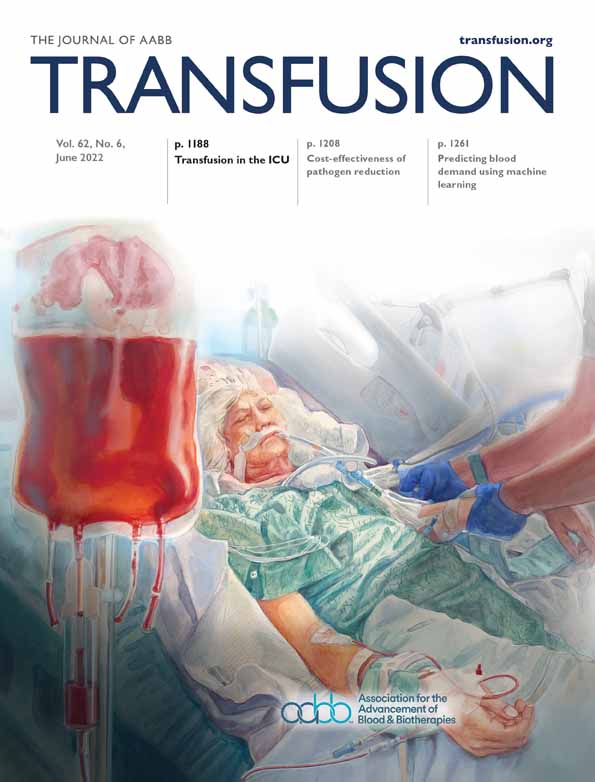Factors associated with first-time and repeat blood donation: Adverse reactions and effects on donor behavior
Funding information: Stanford Medical Scholars Fellowship Program
Abstract
Background
Blood centers have a dual mission to protect donors and patients; donor safety is paramount to maintaining an adequate blood supply. Elucidating donor factors associated with adverse reactions (AR) is critical to this mission.
Study design/methods
A retrospective cohort analysis of whole blood donors from 2003 to 2020 was conducted at a single blood center in northern California. Adjusted odds ratios (AORs) with 95% CIs for ARs were estimated via multivariable logistic regression on demographics, donation history, and physical examination data. Where appropriate, Wilcoxon-Rank Sum and chi-squared tests were used to determine significance.
Results
First-time blood donors (FTD) exhibited a higher AR rate than repeat donors (4.4% vs. 1.9% p < .0001). When compared with FTDs without AR, FTDs with ARs (FT-AR) were less likely to return (30.0% vs. 47.3%, p < .0001), and, of those who returned, had a higher rate of reaction 20.2% versus 2.8% (p < .001). Factors found to be associated with FT-AR (younger age, increased heart rate, and higher diastolic blood pressure) still correlated positively with AR on return donation, but to a lower degree. FTD who potentially witnessed an AR had a lower return rate (44.6% vs. 47.3%, p = <.001) and donated fewer units (2.38 vs. 3.37, p < .001) when compared to FTD who did not witness an AR.
Conclusion
The AR on FTD increases the AR likelihood of return donation. Longitudinal analysis shows that a time-based deferral policy targeted at FT-AR young donors can reduce the number of ARs while not dramatically impacting the blood supply.
CONFLICT OF INTEREST
The authors have disclosed no conflicts of interest.




